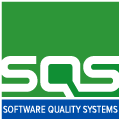The rise of artificial intelligence in today’s world is undeniable and has become a transformative phenomenon in almost every aspect of our lives. The increasing ability of machines to learn, reason, and make decisions has led to revolutionary advancements in technology, medicine, industry, education, and many other fields. AI is driving the automation of repetitive tasks, improving the accuracy of medical diagnoses, optimizing resource management, and sparking innovations that just a few decades ago seemed like science fiction. As we continue to explore the possibilities of artificial intelligence, it is essential to understand its exponential growth and the ethical and regulatory challenges it brings.
But what is artificial intelligence? Artificial intelligence refers to the ability of machines or computer systems to perform tasks that typically require human intelligence, such as learning, reasoning, problem-solving, and decision-making. AI systems can use algorithms and mathematical models to analyze data and learn from it, allowing them to adapt and improve their performance over time.
Validation and Verification Testing of AI Systems
Validation and verification testing in software systems is always advisable. The importance of conducting validation tests in software incorporating artificial intelligence becomes critically important when human safety is at stake. In an increasingly AI-dependent world, where this technology is used in fields such as medicine, autonomous driving, or industrial process control, software errors can have potentially severe consequences, and in some cases, even endanger human lives. Thorough validation testing is essential to ensure that AI systems operate reliably and accurately in various situations, including unexpected or uncommon ones. Early detection of potential failures and their correction before implementation are crucial to safeguarding people’s safety and ensuring that AI contributes safely and effectively to our society.
Methods of Artificial Intelligence Validation

There are several methods for validating software systems that include artificial intelligence (AI) to ensure their accuracy and reliability. Below are some of the most commonly used methods:
Functional Testing
Functional testing evaluates whether the functions and features of the AI system work as intended. For example, in a chatbot, functional tests verify its ability to understand user queries and provide appropriate responses.
Cross-Validation
This method involves splitting the dataset into subsets, training the AI model on one subset, and testing it on the others. This process is repeated multiple times to assess the model’s ability to generalize patterns and minimize overfitting.
A/B Testing
A/B testing is used to compare two different versions of an AI model to determine which one is more effective based on predefined criteria. Two different user groups test two different versions of the algorithm. This type of testing can be conducted to evaluate changes in a wide variety of variables, such as a website design or a user interface.
Ground Truth Validation
In some cases, AI can be validated by comparing its results with a known reference dataset called “ground truth.” For example, in medical diagnostics, AI results are compared to diagnoses made by human experts.
Performance Testing
Performance tests evaluate how the AI performs under different workloads and conditions. Metrics such as response time, accuracy, and resource utilization are measured.
Robustness Testing
Robustness testing ensures that the AI model is resilient to unexpected situations, such as handling erroneous input data or system communication failures.
Usability Testing
In applications where user interaction is essential, usability tests assess how easily users can interact with the AI. This includes evaluating user interfaces and voice command comprehension.
Cybersecurity and Privacy Testing
Cybersecurity is crucial, especially in critical applications. Cybersecurity tests assess the AI’s resistance to potential attacks or malicious manipulations. They also evaluate the security measures implemented to protect user data.
Ethics and Bias Testing
Tests should be conducted to identify biases in data and AI decisions that may have negative ethical impacts. Detecting and mitigating bias is essential to ensure fairness in AI applications.
Regulatory Compliance Testing
In certain industries, such as healthcare or finance, it is important to ensure that AI complies with specific regulations and standards. Tests should verify that the AI aligns with legal requirements.
Real-World Testing
In some cases, real-world testing is necessary, such as testing autonomous vehicle handling on public roads or industrial control system testing in production plants.
Conclusion
The choice of validatión methods depends on the type of application and associated risks. In general, a combination of these methods can provide a more comprehensive evaluation of AI and ensure its reliability and safety in different contexts.





